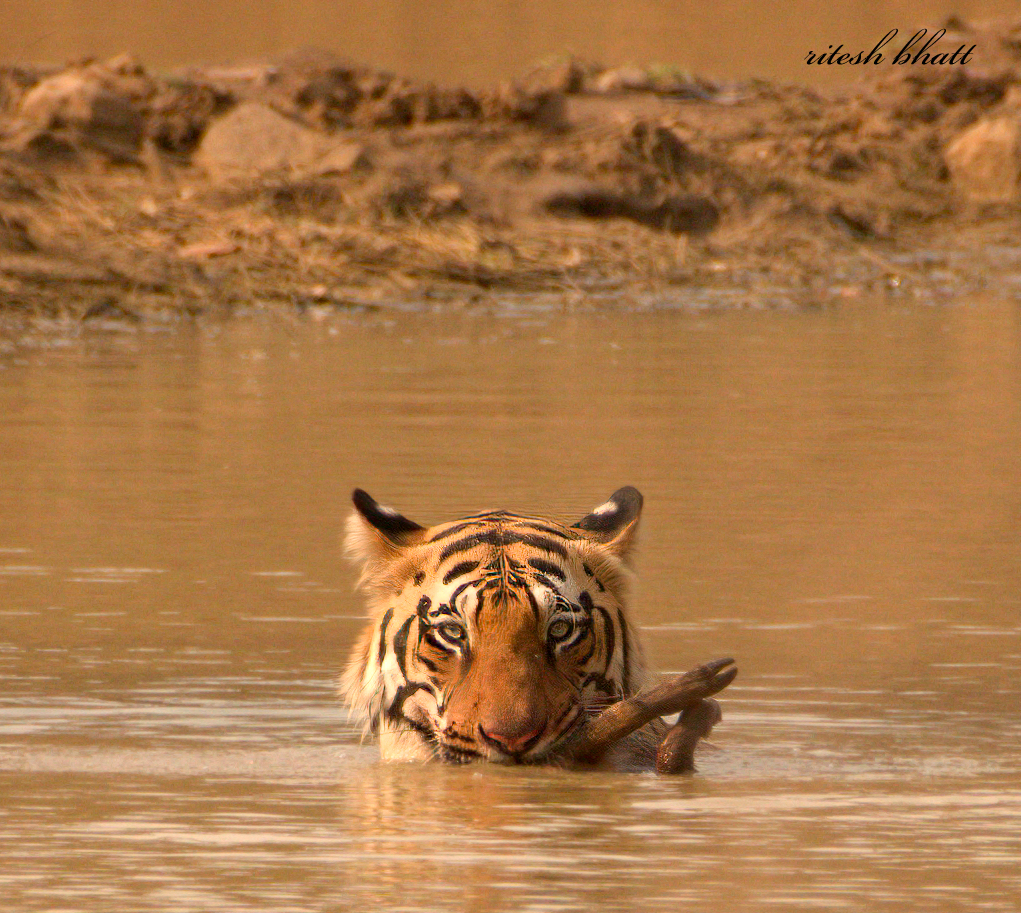Tiger, the keystone species and top predator, is important for the health of the ecosystem. Here are a few breathtaking photos taken by Ritesh Bhatt on safaris in Tadoba, Corbett and Sariska.
A group of conservationists I met in Dehradun, by the name ARCH, are on a quest to rediscover the presumed extinct Himalayan Quail (Ophrysia superciliosa). For those like my former self (before I began wildlife photography), the Himalayan Quail is a species of bird that is critically endangered and was last documented to have been sighted in 1876 at Suwakholi near Dehradun. At that moment I just wondered, it won’t be a surprise that many species of fauna that we are able to see today will meet the same fate as the Himalayan Quail. We would be left searching for them in the wild with a photograph of the last documented shot in one hand and our cameras in the other.


I was recently on a trip to Haridwar to get some good shots of the wild tusker that is often seen in the area. On the way we happened to stop at a lesser known place called Jhilmil lake. It was not much of a lake but a marshland which was spread in a not so large area. We went up on a watch tower to take a look at the green expanse, when my guide pointed out the only known herd of Swamp Deer Barasingha or Rucervus Duvaucelii in Uttarakhand. At first I did not believe him but later when I checked for myself I found that it is a species that is classified as vulnerable on IUCN list and only 4000 odd survive globally. It is the same number as that of the Tiger.


During my preparation for UPSC we studied the Red data book of The International Union for Conservation of Nature (IUCN). The Red List of Threatened Species documents various species and categorizes them as critically endangered, endangered, vulnerable based on a set of criteria like decreasing population or threat to habitat. What appeared a didactic exercise at that time, made me appreciate the uniqueness of various species now. It should be made a part of our school curriculum at an early age. It will help in building a sense of appreciation for wildlife and help us relate to it as part of our ‘safari experience’.
I remember returning from Safari feeling disappointed to not spot ‘the Tiger’ and later reporting this non-event by mournfully saying ‘Yaar Kuch Nahi dikha’.
Tiger, the keystone species and top predator is key to the health of the ecosystem. We have been able to bring it back from a decline and the ‘Sher Khan’ is undoubtedly the mascot of our Safari Tourism. It is listed as endangered with an estimated population of less than 4000.
When I clicked the first few Tiger moments on a Safari to Tadoba, Corbett and Sariska, it was a breathtaking moment.

But soon I realised that by not looking around for other species I was ‘missing the forest for the trees’.
There is the gentle giant, Asian Elephant which is also listed as endangered due to a decreasing population, and is a sight to behold. The way elephants protect their little ones constantly keeping them between the herd, is like none other species.
Another giant that can be seen at Kaziranga National Park is the one horned Rhinoceros, which is listed as vulnerable. A close staring contest with it can surely make your adrenaline rush.
Now coming to the smaller but equally rare wildlife species that we tend to miss. Dhole or Asiatic Wild Dog is listed as Endangered on the IUCN Red List, as populations are decreasing and estimated to comprise fewer than 2,500 mature individuals. They stay and hunt in a pack, sometimes giving a challenge to the bigger ones.


On my trip to Kaziranga I sighted The Pallas’s fish eagle. Later I realised that it is listed as Endangered on the IUCN Red List. The global population is estimated at less than 2,500 individuals. Besides direct persecution, humans contribute to the decline of this species through habitat degradation, pollution, and draining or overfishing lakes.


I had a chance to spot the bird again, only this time nesting at Corbett National Park with a little one. Can you spot it in the photo?
On the road to Ramnagar I found a group of vultures sitting on a tree. I stopped my car and found that it is none other than the Himalayan griffon vulture which is native to the Himalayas and the adjoining Tibetan Plateau. It is listed as Near Threatened on the IUCN Red List. Himalayan vultures are susceptible to toxicity induced by diclofenac, a drug whose residues in domestic animal carcasses has led to rapid declines in populations. We are seeing a comeback of the population of vultures which act as the nature’s clean-up crew.
While enjoying the ’sightings’ of these animals or not, depending on your luck, take the time out to enjoy the feel of the jungle. I have these views captured on my camera and more importantly registered in my mind.
Ritesh Bhatt is an IRS officer who is interested in wildlife photography and conservation issues.

